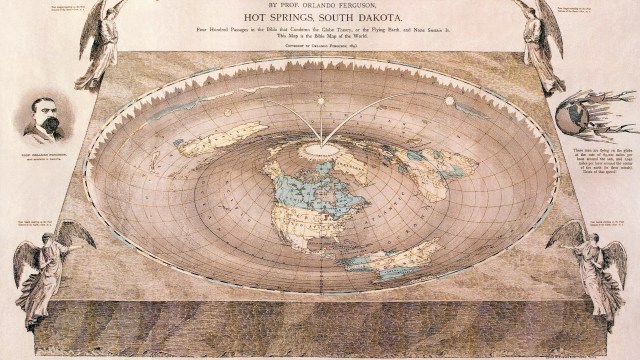Ask Ethan: It’s Absurd To Think Dark Matter Might Be Made Of Hexaquarks, Right?
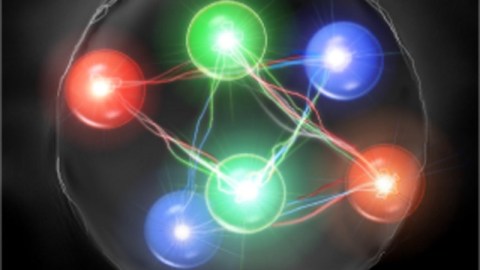
You’d have to throw out a lot of known physics for this to even be a possibility. Here’s why.
It’s an undeniable scientific fact that dark matter must exist in order to explain the full suite of observations we have about the Universe. Despite all that we know about it, however, we have yet to identify what particle(s) actually compose it. Every single direct detection experiment we’ve ever concocted has come up empty. Although a plethora of dark matter candidates have been proposed, there’s no robust evidence in support of any of them. A new idea has been making waves this month as a dark matter candidate: a specific type of particle known as a hexaquark. Is this a viable dark matter candidate? Patreon supporter BenHead wants to know, asking:
Lots of science headlines [are] telling me dark matter might be a Bose-Einstein condensate of d* hexaquarks. Only problem I see? When notionally detected d* hexaquarks lived for 10^-23 seconds. What’s your take?
It’s a clever idea that’s almost certainly wrong. Here’s why.
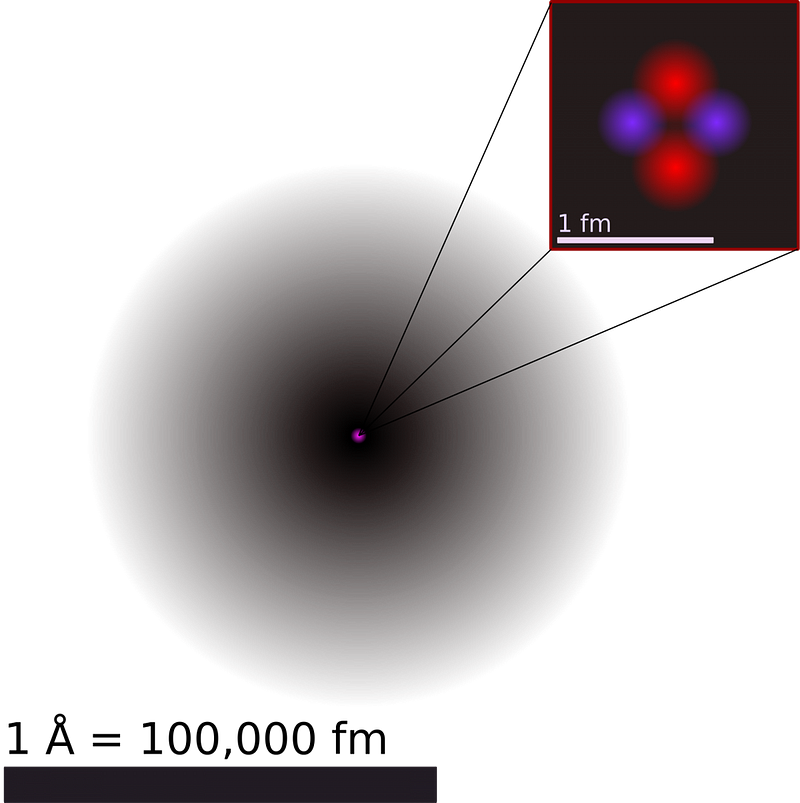
When we first started diving into the atomic nucleus, we started noticing a number of properties that seemed strange at the time. Here are a few facts of interest.
- All atomic nuclei are made up of two types of particles: protons and neutrons.
- A neutron was slightly heavier than a proton: by about 0.1%.
- Free protons are stable forever and ever.
- Free neutrons are unstable, and will decay with a mean lifetime of about 15 minutes.
- If you bind protons and neutrons together, the total mass of the new nucleus is less than the mass of the individual protons and neutrons.
- And if you bind them together in specific combinations, some atomic nuclei are stable, while others will decay.
One possibility for that decay (known as beta decay) is simply to have one of the neutrons in the nucleus decay, converting into a proton, an electron, and an anti-electron neutrino.
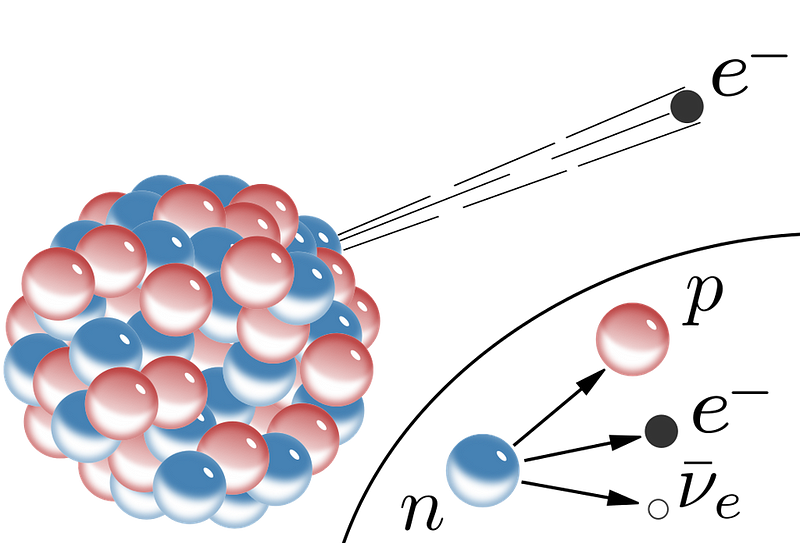
There was a valuable lesson that became immediately apparent: some particles (like the neutron) that are unstable when they’re not bound to anything else can all-of-a-sudden become stable in a bound state. Free neutrons might not be stable, but neutrons that are bound in nuclei from helium to iron to lead will be stable for an infinite amount of time, as far as we can tell.
The reason for this stability? It’s the amount of binding energy (per nucleon, in this case) compared to the mass/energy difference between the parent particle (the neutron) and the daughter particles (proton, electron, and anti-electron neutrino) that it would decay into. If a system is bound tightly enough, it’s possible that even a collection made entirely of unstable particles can be stable. The classic example is a neutron star. Even though the inner 90% of the object is entirely made of neutrons, the combined gravitational and nuclear binding of these particles renders the entire system stable.
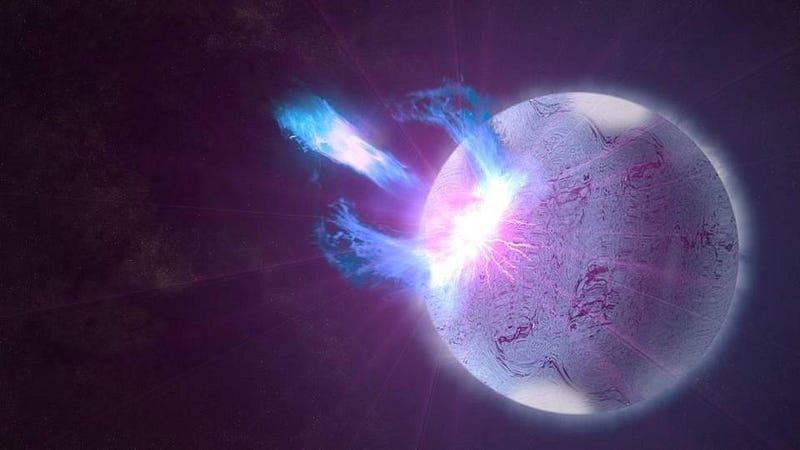
Once we understood what binding energy was and how it worked, a brilliant idea was proposed to explain the “zoo” of particles that were starting to come out of particle colliders. In addition to the proton and neutron, a heavier, unstable version of them — the Lambda particle (Λ⁰) — was also found. But so were a slew of other particles: 3 varieties of pion, 4 varieties of kaon, the rho, eta, eta prime, and phi mesons, etc.
In 1956, years before anyone thought about quarks, Shoichi Sakata had a brilliant idea: perhaps all of these new particles were simply composites of the three “fundamental” particles we knew of:
- the proton,
- the neutron,
- and the Λ⁰.
Even though many of the composite particles (like the pions) were lighter than even individual protons, neutrons, or Λ⁰ particles, perhaps binding energy could account for it. The Sakata model, despite its brilliance, was ruled out by deep inelastic scattering experiments which proved the reality of quarks and gluons.
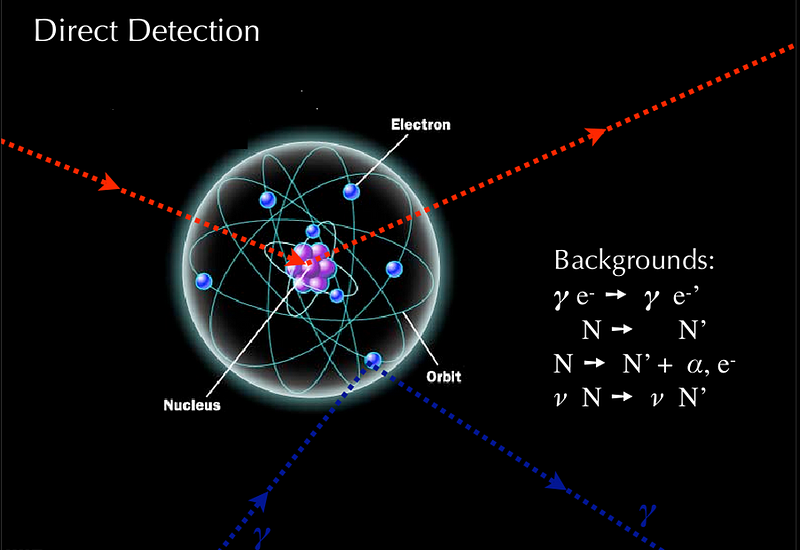
However, the idea survives: unstable composite particles, if bound together under the right conditions, could become stable. Now that we know quarks (and anti-quarks) exist, this brings up a new theoretical possibility of having not only particles like protons being stable, but other combinations as well. After all, we’ve now discovered particles such as:
- baryons (like protons, neutrons, and the Λ⁰, made of 3 quarks each),
- anti-baryons (made of 3 antiquarks),
- mesons (made of a quark-antiquark combination),
- tetraquarks (made of 2 quarks and 2 antiquarks each),
- pentaquarks (made of 4 quark and 1 antiquark),
- and even hexaquarks (made of 6 quarks).
In 2014, a particularly interesting hexaquark known as the d* was discovered, made of three up and three down quarks (just like a deuteron), but with a heavier mass.
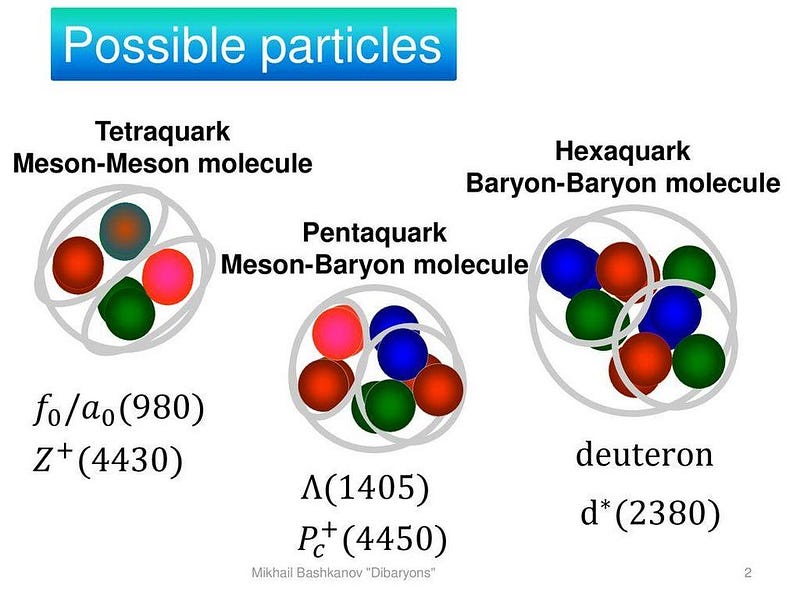
There are all sorts of particles that have previously been discovered that are analogous to this. The rho mesons, for example, have a mass of ~775 MeV/c², decaying into pions (with the same quark-antiquark composition but less than 20% the mass) after about 10^-23 seconds. The delta baryons are all made exclusively of up and down quarks but with a mass of 1232 MeV/c²: about 300 MeV/c² heavier than protons and neutrons, which they decay into after about 10^-23 seconds.
Now, a standard deuteron is a proton and neutron bound together, with a total mass of 1875.6 MeV/c²: 2.2 MeV/c² lighter than a neutron and proton individually. But the d* hexaquark, an excited state of the deuteron, has a mass of 2380 MeV/c². Its lifetime? Just about the same as the others: 10^-23 seconds. After that much time, it decays through the strong nuclear interaction to a regular deuteron and two pions.
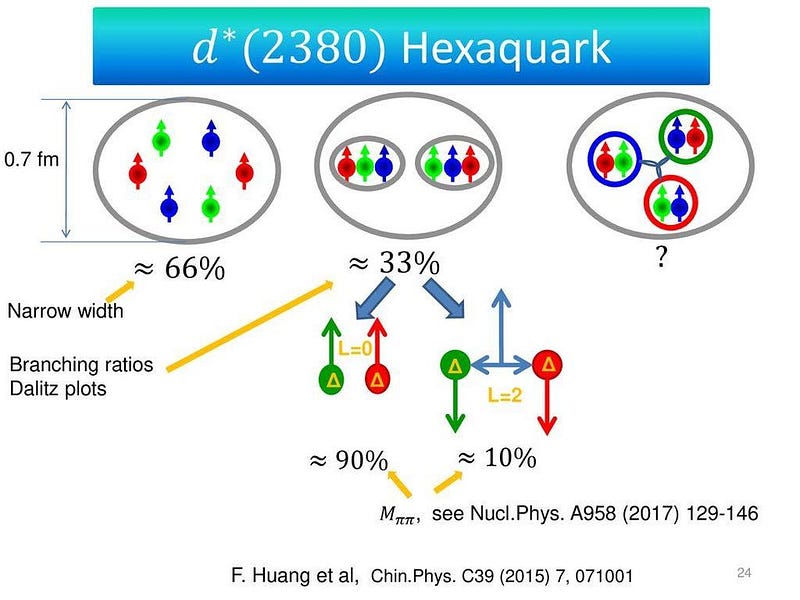
So far, so good. This is just standard nuclear-and-particle physics, with no surprises. Dark matter, in contrast to particles like the neutron, must be stable for at least hundreds of billions of years, so it absolutely cannot decay away on typical timescales that the d* particle decays on. However, it’s plausible that if we make enough d* particles in the early Universe, they could bind together in great enough numbers to create a state of matter similar to a miniature neutron star: where the binding energy between the d* particles keeps it from decaying.
That’s the idea behind a new paper: A new possibility for light-quark dark matter, by M. Bashkanov and D.P. Watts. They combine a few interesting realizations together:
- that bound states of six quarks act as a boson, rather than a fermion,
- that the physical size of the d* should be small, perhaps even smaller than a proton,
- and that in the dense state of the early Universe, particularly if other conjectures are correct, large numbers of d* particles won’t just be created, but could condense together in the same location to form a Bose-Einstein condensate state.
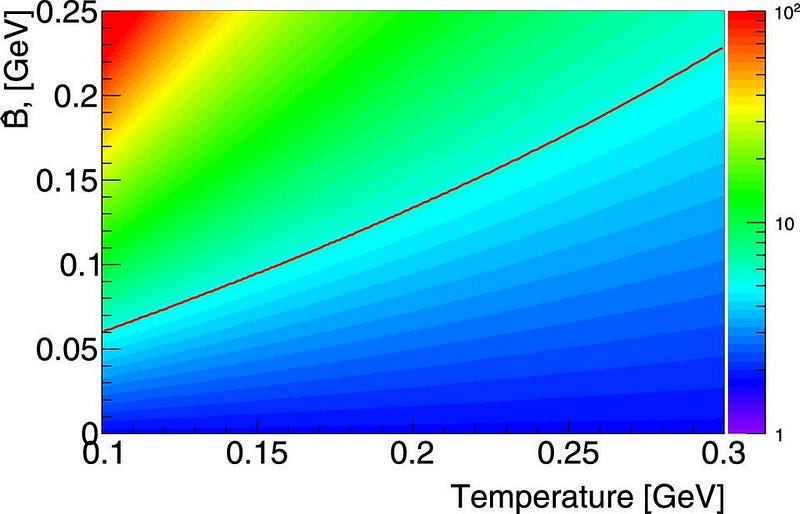
If all of these things occur, and if the binding energy is great enough (it needs to be about 10% of the total rest mass of each d*, on average), it will forbid the standard decay of the d* on energy concerns, the same way that neutron (beta) decay is forbidden in the normal deuteron. I’ll give it this much: it’s a clever idea, and one that could potentially be tested at heavy ion colliders if the right conditions can be created.
But even if everything the authors contend is true — even if quarks and anti-quarks are somehow separated and large number of d* particles form when the Universe is ~1 microsecond old after the hot Big Bang — these d* particles are unlikely to survive for one major reason: the Universe is dominated by radiation in these early stages. There are enough fast-moving particles with enough kinetic energy to constantly be colliding with these d* particles, and when they do, these collisions will immediately blast them apart.

This is a challenge for all composite particles in the early Universe. It’s why there is no (normal) deuterium until the Universe is ~3 minutes old: because radiation blasts any deuteron particles apart in an instant. It’s why neutral atoms cannot form until the Universe is ~380,000 years old: the radiation blasts them apart if they do form previously. For a d* particle formed when the Universe is microseconds old, the same problem arises with no solution: radiation will blast them all apart, even if they’ve already formed a Bose-Einstein condensate, as there are too many photons and neutrinos that exceed the critical energy threshold.
It’s not enough to simply look at QCD and the strong force and conclude that an exotic state of matter might be stable under some special conditions; we’ve done that for 6-quark states as early as 1977. We need to clear a higher hurdle, and make sure we can create realistic amounts of these particles while avoiding their destruction in our actual Universe. Based on what we presently know, we do not have a way to make that occur.
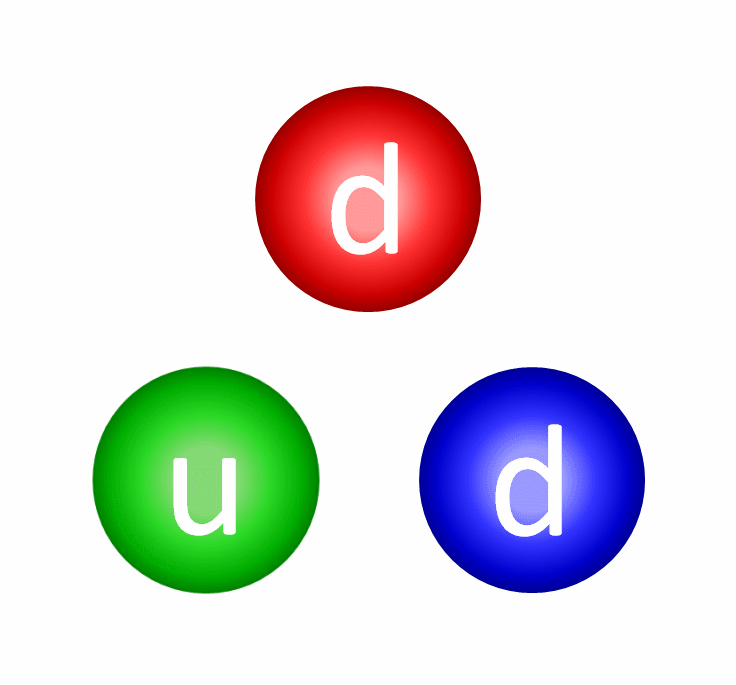
It’s worth pointing out that this is a clever idea, and one that isn’t ruled out for the conventional reasons you might think. Typically, dark matter cannot be normal matter (made out of Standard Model particles) because we know how much normal matter must have been present during the early stages of the Universe when the light elements were formed: during nucleosynthesis. But this scenario at least evades that bound by “locking up” this normal matter during a pre-nucleosynthesis stage, allowing the light elements to be created without interference from this dark form of normal matter.
However, even if it’s possible to create a d* condensate as the authors propose, it cannot survive the intense radiation of the early Universe. Once they’re blasted apart, there’s no way to create more d* particles capable of forming a Bose-Einstein condensate, as the conditions that admit their creation will have passed. It’s a clever idea, but we don’t need to wait for colliders to rule it out. The early Universe as we understand it is already enough to crush the idea that d* hexaquarks can make up our Universe’s dark matter.
Send in your Ask Ethan questions to startswithabang at gmail dot com!
Ethan Siegel is the author of Beyond the Galaxy and Treknology. You can pre-order his third book, currently in development: the Encyclopaedia Cosmologica.




